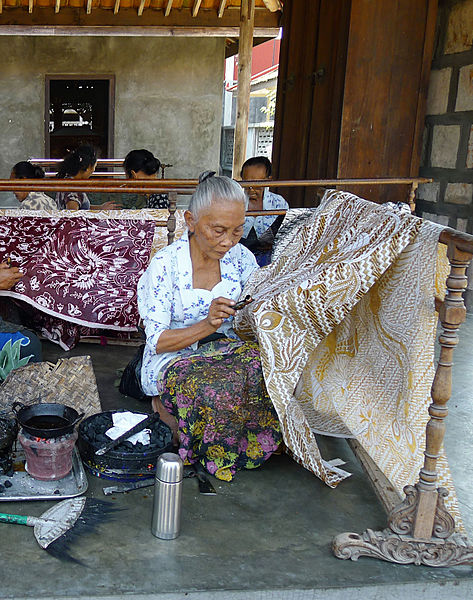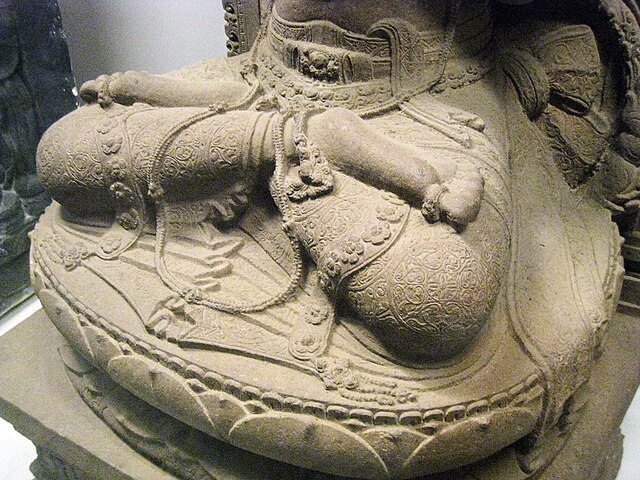A sarong or a sarung is a large tube or length of fabric, often wrapped around the waist, worn in Southeast Asia, South Asia, Western Asia, Northern Africa, East Africa, West Africa, and on many Pacific islands. The fabric often employs woven plaid or checkered patterns or may be brightly colored by means of batik or ikat dyeing. Many modern sarongs have printed designs, often depicting animals or plants. Different types of sarongs are worn in different places in the world, notably the lungi in the Indian subcontinent and the izaar in the Arabian Peninsula.
Dutch military personnel wearing sarong, 1949
Three women wearing sarongs in 1905
Sundanese sarong weaver in Bandung, West Java, present-day Indonesia, 1900–1940
Sarung denotes a length of fabric as a garment.
Batik is an Indonesian technique of wax-resist dyeing applied to the whole cloth. This technique originated from the island of Java, Indonesia.
Batik is made either by drawing dots and lines of wax with a spouted tool called a canting, or by printing the wax with a copper stamp called a cap. The applied wax resists dyes and therefore allows the artisan to colour selectively by soaking the cloth in one colour, removing the wax with boiling water, and repeating if multiple colours are desired.
Batik from Surakarta in Central Java province in Indonesia; before 1997
Batik craftswomen in Java drawing intricate patterns using canting and wax that are kept hot and liquid in a small heated pan, on 27 July 2011
Museum Batik Pekalongan, Central Java
Jlamprang or ceplok batik motif of clothes of 13th-century East Javanese Prajnaparamita statue resembles batik, National Museum of Indonesia, Jakarta








